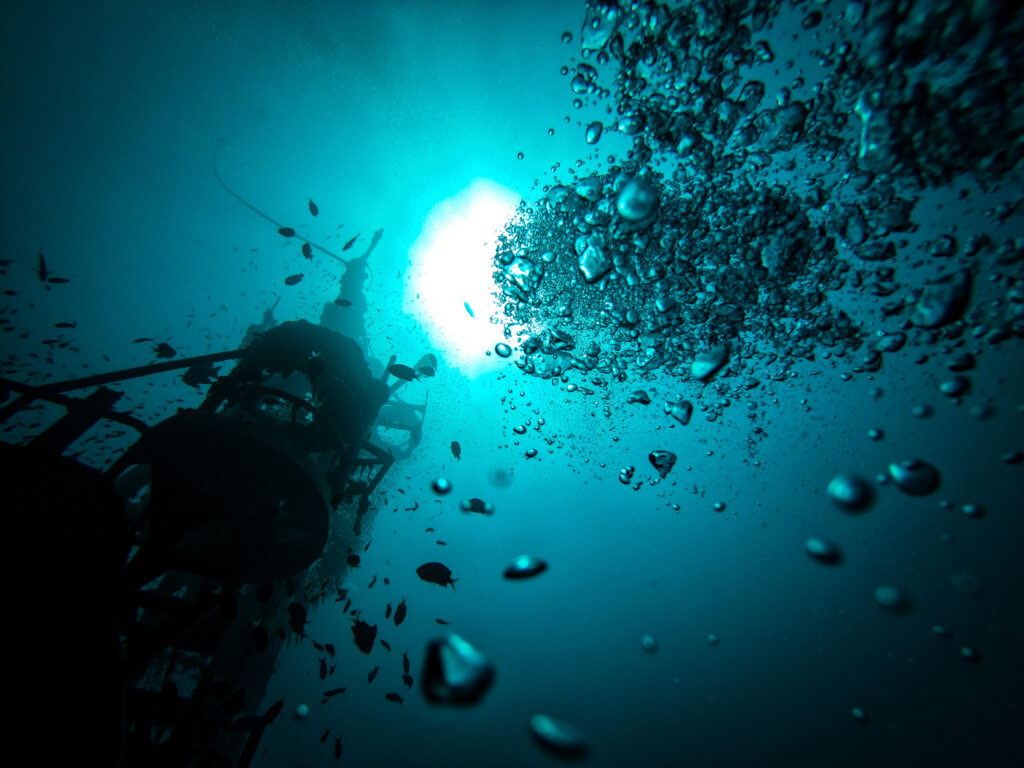What is Shallow Water Blackout?

Shallow water blackout is a sudden loss of consciousness that can occur among breath-hold divers, particularly in freediving.
What is carbon dioxide toxicity (CO2 toxicity) from scuba diving?

Carbon dioxide toxicity (CO2 toxicity ) occurs when excessive levels of CO2 accumulate in the bloodstream, leading to adverse physiological effects that range from mild discomfort to life-threatening emergencies. This entry explores the causes, symptoms, and preventive measures associated with CO2 toxicity in scuba diving.
What is Hypoxia when Scuba Diving?

Hypoxia, defined as a deficiency of oxygen in the body, is a significant concern for scuba divers, as it can impair vital bodily functions, reduce consciousness, and lead to life-threatening conditions. This medical issue becomes especially relevant in the context of scuba diving, where a diver’s environment and the unique breathing conditions can increase the likelihood of insufficient oxygen levels. Hypoxia is not always immediately apparent, but recognizing and understanding its causes, symptoms, and prevention strategies can help divers stay safe underwater.
What is Hyperventilation?

Hyperventilation refers to a state of rapid or deep breathing that exceeds the body’s need for oxygen. This condition leads to a significant decrease in carbon dioxide levels in the blood, causing various physiological effects. Understanding hyperventilation is crucial for scuba divers as it can profoundly impact their safety and overall experience underwater. Divers need to be aware of the causes, effects, and preventive measures related to hyperventilation to ensure safe and enjoyable diving experiences.
What is Freediving?

Freediving, also known as breath-hold diving or apnea, is an underwater activity that involves diving without the aid of scuba equipment or artificial breathing apparatus.
What is Cyanosis?

Cyanosis refers to a bluish discoloration of the skin and mucous membranes caused by an insufficient level of oxygen in the blood. This condition can signal underlying health issues, particularly those related to respiratory and circulatory systems. In scuba diving, cyanosis is a critical indicator that a diver might be experiencing hypoxia, a dangerous reduction in oxygen levels. Recognizing and understanding cyanosis is vital for ensuring diver safety, as it can be a precursor to more severe conditions if not promptly addressed.
What is Spearo?

What is Spearo? “Spearo,” a term of endearment in the world of diving, refers to an individual who engages in breath-hold spearfishing. Hailing from the word “spearfisher,” the term “Spearo” has been adopted into the lexicon of underwater sports, reflecting the passion, skill, and community of those involved in this ancient practice of gathering food, […]
What is Breath-Hold Diving?

Breath-hold diving, also known as freediving or apnea diving, is the practice of diving underwater without the use of a life support apparatus, such as scuba gear. Instead, divers rely solely on their ability to hold their breath while submerged. This ancient form of diving has been practiced for millennia by various cultures around the world, both for recreational and professional purposes.
What is Apnea?

What is Apnea? Apnea, a term derived from the Greek word “apnoia,” meaning “want of breath,” is commonly defined as a temporary suspension of breathing. Initially used in medical contexts, apnea has evolved to become synonymous with freediving, a form of underwater diving that requires divers to hold their breath while exploring the depths of […]
What is Anoxia?

What is Anoxia? Anoxia, a medical condition characterized by an acute deficiency of oxygen in the body, is a critical concern for scuba divers. It can occur due to various reasons and poses severe risks to divers’ health and safety. In the context of scuba diving, it is essential to understand the causes, symptoms, and […]
